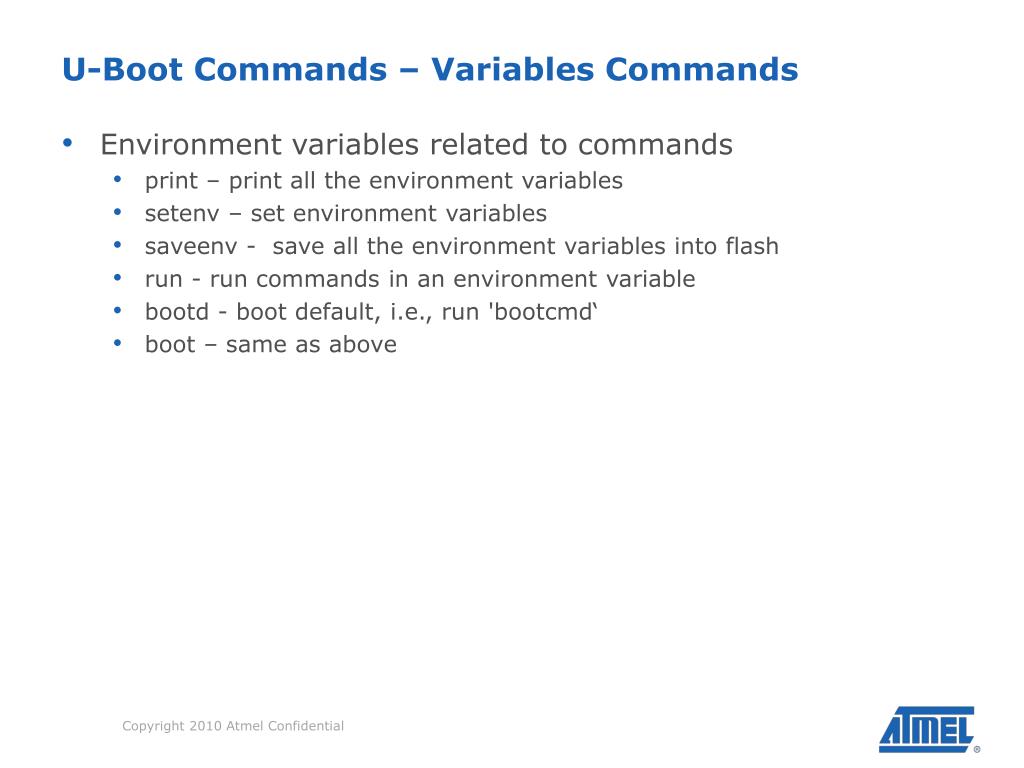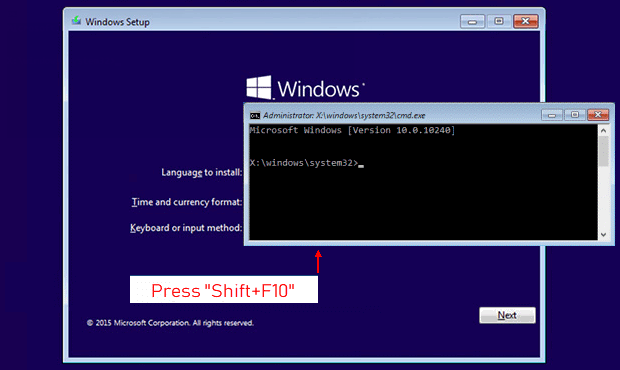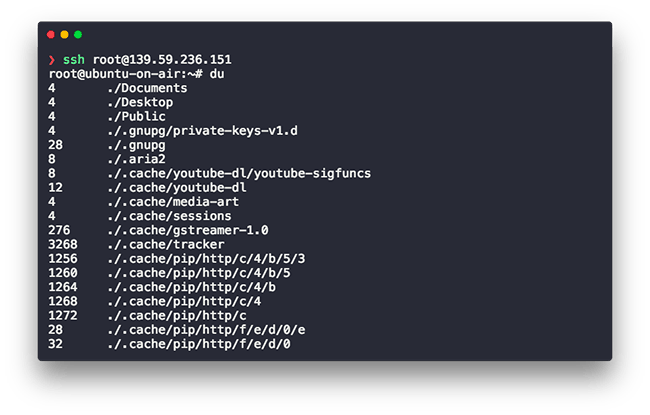

- #U boot commands linux install
- #U boot commands linux serial
- #U boot commands linux software
- #U boot commands linux mac
This will interrupt the U-Boot bootcmd sequence and let you enter the U-Boot command monitor:įrom the command monitor, you would be able to reset bootdelay to 3 or whatever value makes sense to you.Setting up U-Boot environmental Variables To do so, push the Ctrl-C keys down and don't release them until you have hit the reset button on the Discovery board. With bootdelay set to 0 the U-Boot countdown is disabled, so there is a question how you enter the U-Boot command monitor, should you need to enter it for some reason.

This will make sure that on each power on / reset U-Boot immediately executes the command defined by bootcmd, typically booting Linux from internal Flash. In deployed configurations, where boot time to the service provided by your embedded device is critical, you will probably want to set bootdelay to 0:

Typically, this would be run netboot to boot Linux from TFTP during development or run envmboot to boot Linux from the internal Flash on deployed units. The bootcmd variable defines a command executed by U-Boot automatically after the bootdelay countdown is over. This will let you enter the U-Boot command line interface. During the bootdelay countdown, you can interrupt the autobooting by pressing any key. The bootdelay variable defines a delay, in seconds, before running the autoboot command defined by bootcmd. The autoboot sequence in U-Boot is controlled by the two environment variables called bootdelay and bootcmd. Running saveenv makes sure that any updates you have made to the U-Boot environment are persistent across power cycles and resets.

STM32F429-DISCO> setenv image vlad/networking.uImage
#U boot commands linux mac
Parameters defined by the U-boot environment variables include: target IP address, target MAC address, location in RAM where a Linux bootable image will be loaded, and many others. On the Discovery board, the U-Boot environment is stored in the internal Flash of the STM32F429 and is persistent across power or reset cycles. U-Boot makes use of the so-called environment variables to define various aspects of the target functionality. From the command monitor you can run U-Boot commands to examine memory, load an image from Ethernet or UART, boot Linux from a loaded image or perform any other action supported by U-Boot.
#U boot commands linux serial
If you hit any key on the serial console before the number of seconds defined by the U-Boot bootdelay variable has elapsed, you will enter the U-Boot interactive command monitor. External RAM is not used unless you explicitly call a U-Boot command with an argument pointing to a memory location in SDRAM.Īs soon as the Discovery board is powered on or reset, the STM32F429 proceeds to boot the U-Boot firmware from the internal Flash printing the following output to the serial console:įreqs: SYSCLK=180MHz,HCLK=180MHz,PCLK1=45MHz,PCLK2=90MHz Volatile data (stack, variables, dynamic pool) are maintained in the internal SRAM. On the STM32F429, U-Boot runs directly from the internal Flash.
#U boot commands linux software
It is developed and maintained by DENX Software Engineering ( If you need detailed information on any aspects of U-Boot operation, DENX publishes extensive U-Boot user documentation at their web site. U-Boot is probably the most popular firmware monitor for Linux. U-Boot runs as the primary firmware from the internal Flash on each power-on / reset.
#U boot commands linux install
As explained in Installing U-Boot to the STM32F429 Discovery Board, you have to install U-Boot to the internal Flash of the STM32F429 in order to run Linux (uClinux) on the Discovery board.


 0 kommentar(er)
0 kommentar(er)
